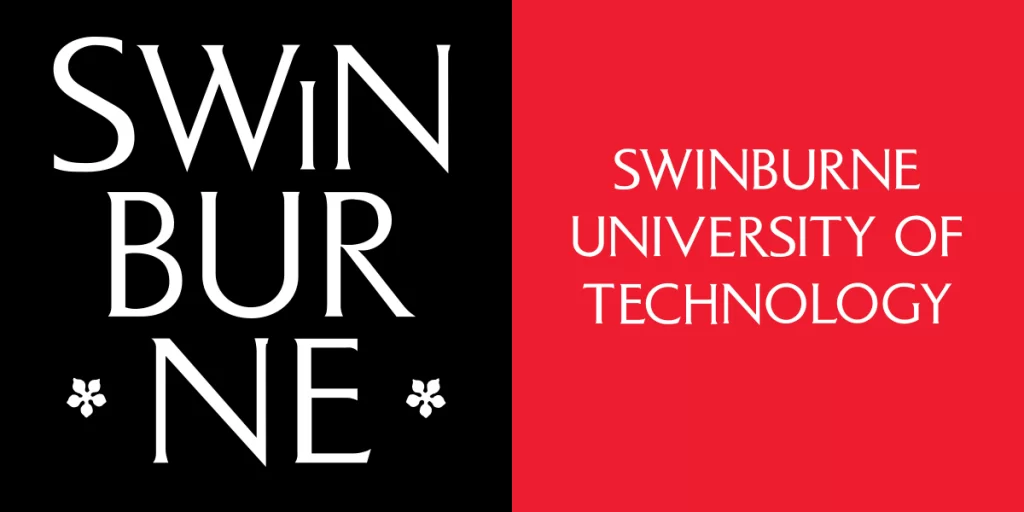At Swinburne’s Space Technology and Industry Institute, researchers are engineering solutions for complex problems that are out of this world.
The dust on the moon is literally like nothing on Earth. It is unique in its destructive properties, particularly on machinery. It grinds and tears, with sharp edges and an alarming ability to stick to materials more than any similar substance found on Earth.
“It is absolutely terrible stuff,” says Professor Alan Duffy, Director of the Space Technology and Industry Institute (STII) at Swinburne University of Technology.
“We’re doing a lot of work to enable dust mitigation processes for the moon. We’re trying to design new coatings, passive or active, that can repel the dust. It really is the most toxic substance you’ve ever seen in terms of what it can do to machinery.
“It is impossibly abrasive and is adhesive as it’s electrostatically charged. Look at it under the microscope and you can see it hasn’t been weathered at all, so it has these razor-sharp edges. And apparently it smells like gunpowder, so say astronauts who have brought it back into their capsule on their clothes.”
A team of researchers at the STII, led by Professor Geoff Brooks, have raided local mines to find and create a material that is at least generally comparable to moon dust. The output from rock crushers sometimes include an abrasive and similarly sized particle, says Duffy. Using this, the STII team is developing new materials and techniques to reduce wear and tear in alien environments.
That’s just one of many research projects being undertaken at the STII. Others include:
- Microgravity experimentation – looking into space medicine and health, biotech applications, smart experimental platforms for space and more.
- Space manufacturing – developing new and cost effective construction techniques for companies to design and build for space with confidence.
- Extra-terrestrial resource processing – supporting future space missions by extracting the metals and oxygen from the lunar bedrock using solar energy and electrolysis.
- Materials and coatings for space – Professor Andrew Ang is leading a group that is researching how to give functional characteristics to surfaces through treatment or coatings as well as select new and better materials for the challenges of space
- Remote sensing – applying AI techniques to analyse and interpret Earth Observation data to help our planet from space.
- Space instrumentation engineering – creating next generation sensors for space to better monitor our world by Professor Peter Moar’s team and his partners in international space agencies.
Engaging outside partners
The STII partners with corporates and SMEs to help solve complex problems. It works on solutions that benefit those on Earth as much as they will on the moon or Mars.
This includes the development of a completely circular economy, or the capability for metals and materials produced on the moon to be recycled over and over.
“It’s actually not cost effective to do otherwise,” says Duffy. “We have several PhD students working on material selections and the development of recycling concepts on the moon. So we have a really rich variety of challenging engineering problems that just happen to be situated on the moon.
“At Swinburne, we have to be constantly advancing our knowledge ahead of the Artemis mission, ‘NASA’s Return to the Moon’ [first landing in 2024 and working toward sustainable lunar exploration by the late 2020s], to ensure we have all of the necessary engineering technologies and solutions ahead of time.”
But the Swinburne space team isn’t just partnering with organisations. It is also engaging schoolchildren and embracing the imagination they bring.
“If we bring schoolchildren into the mix it means we’re inspiring the next generation of scientists and engineers for space,” says Duffy.
“Equally important is the fact that they often propose more exciting and creative missions than we do.”
One research project, undertaken by high school groups and taking place on the International Space Station as part of the Swinburne Youth Space Innovation Challenge led by Dr Rebecca Allen, involves what Duffy calls “space yoghurt”.
“The students wanted to see the impact on lactic acid bacteria during extended duration spaceflight,” he says.
“They looked toward a future where we will have long-duration missions and decided to explore the impact of microgravity on a sample of these microbes in space.”
What goes up, must come down
Innovations developed for space tend to have enormous applicability on Earth, says Duffy.
The STII’s remote sensing program, called AI 4Space and led by Professor Kai Qin, takes imagery from satellites and fuses it with information from synthetic aperture radar (SAR) satellites to feed into numerous other data sources already available on the ground.
“With this program and through our partnership with EY, we’ve been able to support vegetation management and enhanced bushfire mitigation along a 1000-kilometre stretch of railway, all from space,” he says.
“We always welcome industry approaching us with difficult problems. There’s an opportunity for them to work with everyone from professors all the way through to undergraduates, all of whom are involved in our process. Organisations know their industry better than we do, and we know space research, so often it’s about coming together with those disparate areas of expertise and having a chat.”
That’s the wonder of space, says Duffy.
“Everything we do for space makes a difference on the ground. Everything we do has an impact in our world, as well as on the moon.”
To discuss partnership opportunities with Swinburne’s Space Technology and Industry Institute, contact spaceinstitute@swinburne.edu.au or visit the institute’s website.

